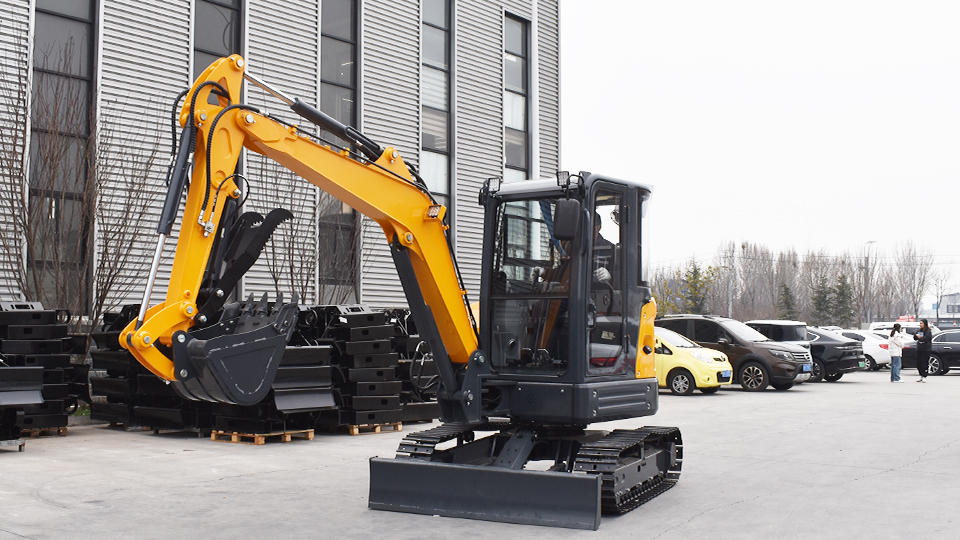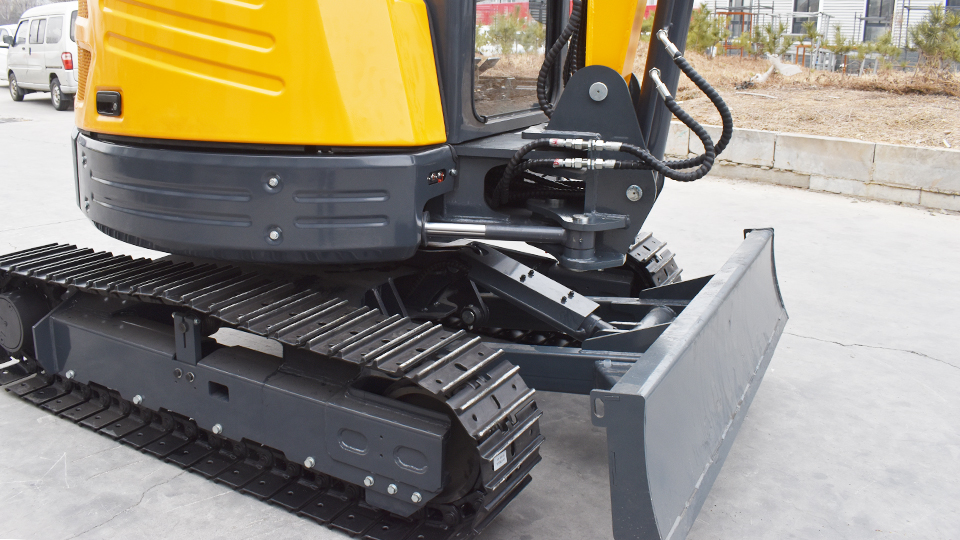Hydraulic Evolution: Inside the Next Generation of ExcavatorsThe hydraulic excavator is the undisputed workhorse of the construction and mining industries.1 For decades, the fundamental principle—converting engine power into hydraulic pressure to manipulate a powerful kinematic linkage—has remained constant. However, the last ten years have witnessed a silent, profound hydraulic evolution, transforming these powerful machines from simple force multipliers into sophisticated, energy-efficient, and digitally controlled systems. The Next Generation of Excavators isn’t defined merely by increased horsepower, but by a radical redesign of their core fluid power systems, driven by demands for greater fuel efficiency, superior controllability, and seamless integration with digital automation.This technical article will delve into the critical advancements that define modern hydraulic excavators. We will explore the shift from traditional open-center and load-sensing systems to advanced electro-hydraulic (EH) architecture, the role of energy recovery and regeneration technologies, and the implementation of intelligent controls that merge digital precision with raw hydraulic power. The future of digging hinges on these innovations, promising not just faster cycles, but a fundamental change in the efficiency and sustainability of earthmoving operations worldwide.

2I. The Shift to Electro-Hydraulic (EH) ArchitectureThe most significant technological leap in modern excavators is the transition from purely mechanical- or pilot-controlled hydraulics to Electro-Hydraulic (EH) systems. This change replaces the direct mechanical linkage between the joystick and the main control valve with a digital signal, offering unparalleled flexibility and control.A. Core Components of the EH SystemElectronic Joysticks and Inputs: The operator input is no longer a physical displacement of pilot pressure lines, but a variable electrical signal (often $0$–$5$ V DC or a CAN bus message). These signals are interpreted by the machine’s central Electronic Control Unit (ECU).Proportional Solenoid Valves (PSV): These are the critical interface between the digital world and the fluid power world. The ECU sends a Pulse Width Modulated (PWM) signal to the PSVs. The solenoid precisely controls the spool displacement within the main control valve, modulating the flow of high-pressure fluid to the actuators (cylinders and motors).The Master ECU: The brain of the system. It receives input from the joysticks, engine, pressure sensors, and angle sensors, and executes complex control algorithms to manage the PSVs, ensuring smooth, precise, and coordinated movement of the boom, arm, and bucket.B. Advantages over Traditional HydraulicsPrecision and Controllability: EH allows for extremely fine metering of flow, providing superior feathering (slow, precise movement) and the ability to program specific response curves tailored to different applications (e.g., fine grading vs. bulk excavation).Reduced Piping and Complexity: Eliminating pilot lines reduces the number of hoses, potential leak points, and complexity under the cab, simplifying maintenance.3Integration with Automation: The digital nature of EH is essential for Machine Control Systems (MCS). Automated functions (Grade Assist, E-Fence) operate by the MCS sending commands directly to the ECU, which then controls the PSVs.II.
Pumping Intelligence: Variable Displacement and Demand ControlTraditional hydraulic systems often wasted energy because the pump continuously delivered maximum flow (or a large, fixed displacement), even when the machine required only low flow or was idling.4 Next-generation systems tackle this waste through highly intelligent pump management.A. Load-Sensing Systems Refined (LSS)While not entirely new, LSS has been perfected with EH control. A Load-Sensing Signal (LSS) line feeds back the highest pressure demand in the system to the pump regulator.$$P_{pump} = P_{load} + \Delta P$$where Ppump is the pressure delivered by the pump, Pload is the highest pressure required by the working function, and ΔP is the fixed "margin pressure" (a small differential pressure, typically 20–30 bar). The pump adjusts its displacement to maintain this ΔP, ensuring that the pump only supplies the flow and pressure demanded by the load, drastically reducing energy losses from throttling.B. Independent Metering Valve Technology (IMV)Some manufacturers are moving beyond traditional spool valves altogether. Independent Metering Valve (IMV) systems place multiple PSVs on each cylinder port. Instead of a single spool determining flow direction and rate, the ECU electronically controls the flow entering and exiting the cylinder independently.5Benefit: This provides the highest degree of controllability, allowing for more advanced motion algorithms. For example, it enables flow regeneration (discussed in Section III) directly at the cylinder port and allows the system to manage multiple functions simultaneously without traditional flow saturation or flow-sharing issues.C.
Engine-Pump Optimization and Smart ModesModern excavators use the ECU to integrate the pump output with the engine's torque curve. Smart Modes (e.g., Cat’s Smart Mode, Volvo’s ECO mode) use algorithms to:Monitor the load on the bucket and the operator’s joystick input.Dynamically adjust the pump displacement and the engine speed ($\text{RPM}$).For light-to-moderate loads, the system reduces engine RPM to maintain the target $\Delta P$ (from the LSS), saving fuel without sacrificing operator feel. Full power is instantly available when high pressure is required.III. Energy Recovery and Regeneration Systems ��A major source of wasted energy in conventional excavators is the energy dissipated as heat when lowering the boom or swinging the superstructure.6 Next-generation hydraulics actively recover and reuse this kinetic and potential energy.7A. Boom-Down RegenerationWhen the operator lowers the boom, gravity does the work, forcing oil out of the cylinder’s rod side under pressure. In a traditional system, this pressure is simply restricted by the control valve and converted to heat.
In modern systems, this process is exploited:The oil from the rod end (high-pressure, gravity-induced) is routed directly to the blind end (low-pressure side) of the same cylinder. This assists the lowering motion and reduces the total oil the main pump needs to supply, saving fuel.In IMV systems, the regeneration is managed electronically, providing even finer control over the lowering speed and motion profile.8B. Swing Energy Recovery (Hybrid Systems)The greatest potential for energy recovery lies in the swing function, where large amounts of kinetic energy are generated during deceleration (braking the swing).Hydraulic Accumulators: In some hybrid designs (e.g., Komatsu), a hydraulic motor/generator is integrated into the swing circuit.9 When the operator brakes the swing, the motor acts as a pump, forcing oil into a high-pressure accumulator.The accumulator stores energy (typically nitrogen gas compressed by hydraulic oil) which can then be used to assist the next swing acceleration, taking the load off the engine and reducing fuel consumption by up to $25\%$.Electric/Capacitor Hybrids: Other manufacturers (e.g., Hitachi) use an electric motor/generator and store the recovered energy in ultracapacitors or high-voltage batteries. This stored electrical energy is then used to power the swing motor during acceleration. This shift emphasizes the integration of electrical and fluid power domains.IV. The Role of Advanced Sensors and Fluid ConditioningThe precision and efficiency of next-generation hydraulics depend heavily on continuous, high-fidelity feedback loops provided by sophisticated sensor technology and maintained by optimal fluid conditions.10A. High-Speed Pressure and Angle SensorsPressure Transducers: EH systems rely on fast, accurate pressure transducers mounted in the main control valve and sometimes directly on the cylinder lines. They provide the ECU with the precise load pressure ($P_{load}$) required for the LSS and for implementing safety features like overload protection.Inclinometers and Gyroscopes: Mounted on the boom and stick, these sensors provide the machine's true geometric position, feeding data to the MCS. This is crucial for automation features like Grade Assist, where the ECU must know the exact bucket edge angle to maintain a target grade plane.
B. Fluid Condition Monitoring and FiltrationMaintaining the hydraulic fluid's integrity is paramount to an EH system's life and performance.Filtration Finesse: PSVs and precision pumps operate with extremely tight tolerances ($\sim 2 \mu m$). Modern excavators use multi-stage filtration (e.g., $3 \mu m$ or less) and advanced filter media to prevent contamination from causing valve sticking or pump wear.Contamination Sensors: Integrated sensors continuously monitor the fluid's ISO Cleanliness Code and moisture content. This data, transmitted via telematics, allows for predictive maintenance, ensuring filters are changed before they compromise the system, rather than strictly by hours.Temperature Management: Optimized cooling systems and dynamic fan control ensure the hydraulic fluid remains within its optimal operating range, maximizing viscosity stability and preventing seal degradation.11 Regeneration systems also contribute by reducing the amount of waste heat generated from throttling.

C. The Impact on Operator Interface and MaintenanceThe hydraulic evolution extends beyond the pump room and into the cab and service bay, directly affecting human interaction with the machine.12A. Customizable Controls and ErgonomicsWith EH controls, the connection between joystick and valve is digital, allowing for operator preference profiles.Adjustable Response: The operator can digitally tailor the responsiveness (or "aggressiveness") of the boom, arm, and swing.13 For example, a heavy demolition task might use a highly aggressive setting, while fine grading requires a soft, dampened response.Mode Switching: Pre-set modes (eMAX, PMAX, Fine Mode) automatically re-map the joystick input curves and adjust pump flow limits to match the specific application.B. Diagnostics and Predictive MaintenanceThe dense network of sensors and the centralized ECU fundamentally change troubleshooting.Digital Diagnostics: Technicians no longer chase subtle mechanical pressure drops; they use diagnostic software to interrogate the ECU, which can pinpoint valve failures, sensor malfunctions, or intermittent electrical faults with precise error codes.Predictive Maintenance: Telematics constantly stream data on pressure spikes, component temperatures, and cycle times.14 AI algorithms analyze this data, predicting component fatigue (e.g., pump bearing wear or hose rupture) weeks in advance, enabling proactive scheduling and minimizing costly, unscheduled downtime.15VI. Integration with Electrification and Future TrendsThe advancements in electro-hydraulics are not isolated; they are a necessary precursor to the full electrification of construction equipment.A. The Electric-Hydraulic Hybrid DriveFully electric excavators eliminate the diesel engine entirely, replacing it with a battery and a large electric motor.16 The EH system is perfectly suited for this transition:Electric Motor Optimization: The electric motor can directly drive the hydraulic pump, offering instant, precise torque control and superior power density compared to a diesel engine.Battery Management: Energy regeneration systems (Section III) become even more critical, actively feeding power back into the battery, extending the operating range of the electric machine.B. Dynamic Flow Allocation and Cloud IntegrationThe next frontier involves systems that not only sense the load but anticipate it.
D. Dynamic Flow Allocation: Using AI/ML models to predict the next required movement based on the operator's last action, the system can pre-charge or prepare the relevant pump/valve sections, reducing lag and increasing efficiency.System Calibration via Cloud: Manufacturers can remotely upload updated control algorithms or patch software via the cloud to refine the hydraulic response, optimize fuel maps, or correct operational issues across an entire fleet.Conclusion: The Intelligent Fluid Power SystemThe evolution of excavator hydraulics is a story of precision replacing brute force. By transforming the purely mechanical hydraulic circuit into a sophisticated Electro-Hydraulic (EH) system, manufacturers have unlocked capabilities previously unattainable: millimeter-level accuracy for automation, superior fuel efficiency through intelligent pump control and energy regeneration, and a fundamentally safer and more comfortable operator experience.The integration of high-speed sensors, powerful ECUs, and digital valve control has made the hydraulic system the true core intelligence of the next-generation excavator. As construction moves towards full autonomy and electrification, the advanced, digitally managed fluid power architecture will continue to be the essential conduit for converting raw energy into precise, powerful, and sustainable digging action. The future of earthmoving is already here, buried deep within the pipes, pumps, and processors of the modern hydraulic system.
Post time:Sep-25-2020
